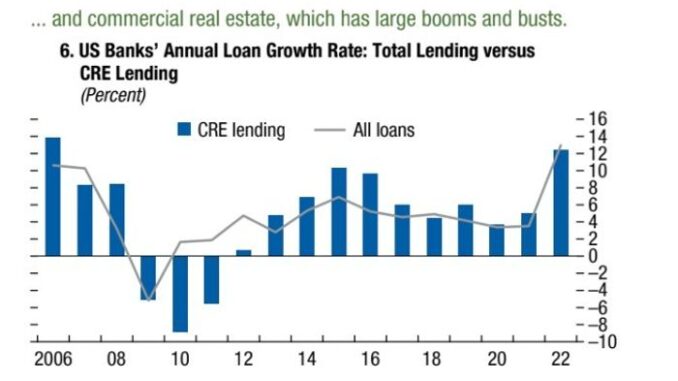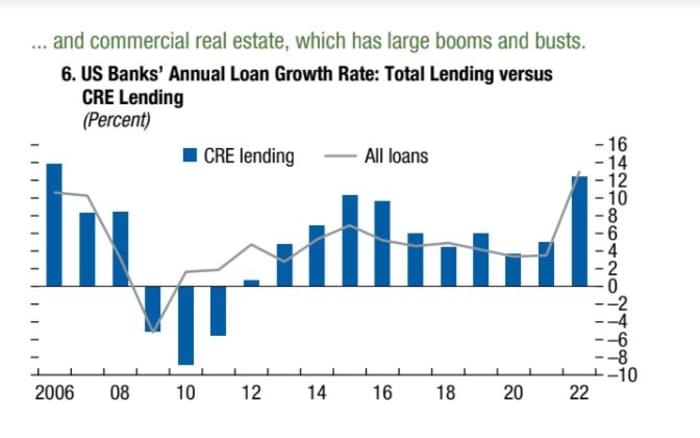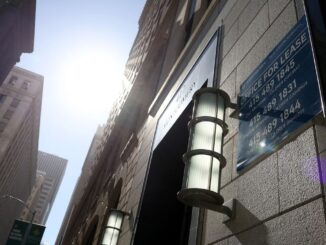
Commercial real estate that appears “significantly overvalued” could tumble in price, as debt costs rise and lenders come under pressure, the International Monetary Fund warned on Tuesday.
Commercial real estate has begun to face significant pressures as global central banks tightened their monetary policy stance, the IMF said in its latest global financial stability report.
In the U.S., banks have been tightening lending standards, making it harder for landlords to secure funding, while funds that also lend in the commercial real estate sector are retrenching, the report said.
Stress in real-estate investment trusts (REITs) and in the commercial mortgage-backed securities (CMBS) market, both important sources of loans to landlords, also could add to the sector’s woes, the report said.
Read: Office property woes could be tip of iceberg if credit freezes up as $1 trillion bill comes due.
This could “exacerbate adverse shocks if the economy slows significantly,” according to the IMF, which warned of rising defaults and losses at lenders from falling property values and illiquid markets.
U.S. Treasury Secretary Janet Yellen signaled a more upbeat tone though, saying Tuesday that it was important not to overdo the negativism in the outlook for the global economy, ahead of an annual IMF-World Bank summit.
Still, the collapse of Silicon Valley bank in March put a focus on the stability of smaller U.S. banks, with less than $250 billion in total assets, which account for three-quarters of all commercial real estate lending. Any “deterioration in asset quality would have significant repercussions both for their profitability and lending appetite,” the IMF stability report said.
Commercial real estate has been vulnerable to past booms and busts. Last year, commercial real-estate loan volumes touched a roughly 12% annual rate at U.S. banks, as a portion of their total lending activity, or the highest since 2006 (see chart).

Commercial real estate tends to see big booms, busts
IMF FINANCIAL STABILITY REPORT, BLOOMBERG FINANCE, NATIONAL CENTRAL BANKS
Commercial-real estate bust?
Torsten Slok, chief economist at Apollo Global Management, estimated that a pullback in commercial real estate construction could result in a drag of around 0.75% to U.S. gross domestic product over the coming three years.
“In other words, with the commercial real estate bubble bursting, we are likely to enter three years with low growth, similar to what we saw after the housing bubble burst in 2008,” Slok said in a Tuesday client note.
He also expects the Federal Reserve to interest cut rates later this year, and to keep them low for several years, while also resuming large-scale asset purchases, or quantitative easing, in 2024.
U.S. stocks were mostly higher on Tuesday, with the Dow Jones Industrial Average DJIA, +0.29% up 150 points, or 0.5%, at last check, and the S&P 500 index SPX, -0.00% up 0.2%, according to FactSet.
Source: www.marketwatch.com



